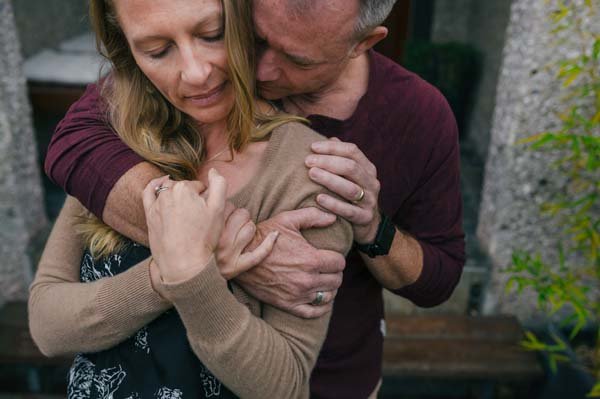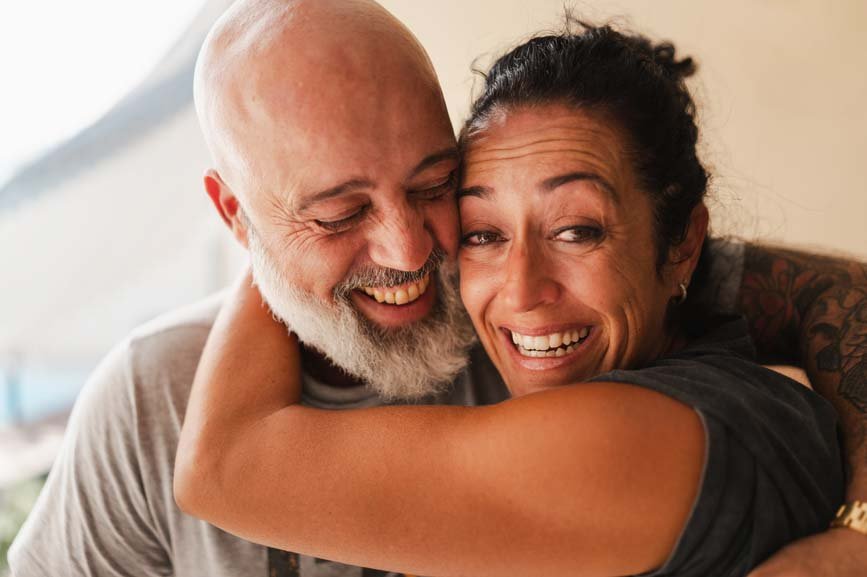I’m about to say something that could make my whole job—no, the entire marriage counseling industry—irrelevant. Ready? Here it is: Marriage is the process of harmony, disharmony, and repair. That’s it. End of story. You’re welcome.
This nugget of wisdom comes from the brilliant therapist Terrence Real, and it sums up the reality of relationships better than just about anything else. The process of marriage isn’t about avoiding conflict or striving for a perfectly smooth ride. It’s about navigating through moments of connection, disconnection, and ultimately, finding your way back to each other.
Sounds simple, right? Well, it’s not quite that easy. Most of us grew up believing that a "good" marriage is one where conflict is rare, where we’re always on the same page, and where harmony reigns supreme. But here’s the truth: conflict in marriage is inevitable. In fact, it’s normal. And the sooner we accept that, the sooner we can start focusing on what really matters—learning how to heal the inevitable ruptures.
Conflict Is Inevitable
I can say with high certainty that 100% of my couples were raised in different households. That makes some amount of conflict inevitable. Each of us brings our own family traditions, cultural backgrounds, senses of humor, and definitions of politeness into the marriage. You and your spouse may have totally different ways of expressing love, handling stress, or even deciding what constitutes a "clean" kitchen.
You will hurt your spouse at some point. And your spouse will hurt you. Not because either of you is cruel or uncaring, but because you are different people, with different emotional triggers, communication styles, and past experiences. It’s a given.
So if conflict is inevitable, what do we do with it? Do we try to avoid it at all costs, or do we learn how to deal with it in a way that strengthens the relationship? Spoiler: it’s the latter.
The Myth of a Conflict-Free Marriage
Let me bust another myth: the idea of a conflict-free marriage is not only unrealistic, it’s undesirable. Why? Because conflict is a natural part of any deep, intimate relationship. When handled well, it can lead to greater understanding, empathy, and connection.
Think of it this way: conflict isn’t the enemy of love. Unresolved conflict is. When conflicts arise and are ignored or left to fester, they turn into resentment. Over time, that resentment builds, taking up more and more emotional space until it becomes nearly impossible to sustain the relationship.
Without the necessary tools to heal these moments of disconnection, disharmony can start to dominate the marriage, and that’s when things get tricky. It’s not the occasional argument that destroys a relationship; it’s the cumulative effect of unhealed wounds and unresolved tension.
The Key to a Healthy Marriage: Healing the Hurt
So, if conflict is inevitable, what’s the key to a healthy marriage? It’s not about avoiding disharmony—it’s about learning how to repair it.
Here’s the process: you’re in a state of harmony with your partner—things feel good, you’re connected, and you’re in sync. Then, inevitably, something happens. It might be small, like a sarcastic comment that lands wrong, or big, like a disagreement over finances or parenting. That’s the disharmony. It disrupts the flow and leaves one or both of you feeling hurt, misunderstood, or disconnected.
The crucial step is what comes next: repair. This is where you make the conscious effort to heal the rupture. It’s where you apologize, empathize, listen, and try to understand where your partner is coming from. It’s where you both work to restore the emotional connection that was disrupted.
Repair doesn’t always happen immediately. Sometimes it takes time for both partners to cool down, reflect, and approach the conversation with fresh eyes. But without repair, the disharmony lingers, and unresolved hurt turns into resentment. That’s why learning the skill of repair is the most important part of any marriage.
How to Embrace Conflict as Part of the Process
So, how do you start embracing this process of harmony, disharmony, and repair in your own marriage? Here are a few steps:
Shift Your Perspective on Conflict: Instead of seeing conflict as a sign that something is wrong, start viewing it as an opportunity to understand your partner more deeply. Conflict isn’t about “winning” or “losing”—it’s about learning and growing together.
Accept That You Will Hurt Each Other: No matter how much you love each other, you’re going to hurt one another from time to time. This doesn’t mean the relationship is doomed. It means you’re human.
Learn the Art of Repair: After a conflict, focus on repair. This involves acknowledging your partner’s feelings, apologizing when necessary, and working together to heal the hurt. It’s not about brushing the issue under the rug but about truly addressing and resolving it.
Build Resilience Together: The more you practice the cycle of harmony, disharmony, and repair, the more resilient your relationship will become. Over time, you’ll find that conflicts don’t feel so catastrophic because you trust that you can find your way back to each other.
To sum it all up: conflict is normal, and it’s an inevitable part of marriage. What matters most is not whether you fight, but how you handle those moments of disharmony. Do you avoid them, letting resentment build? Or do you face them, repair the hurt, and grow closer as a result?
The process of marriage, as Terrence Real so eloquently put it, is one of harmony, disharmony, and repair. The goal isn’t to avoid the disharmony, but to become skilled at the repair. When you learn to embrace conflict as an opportunity for deeper connection, you’ll find that your relationship becomes stronger, more resilient, and more fulfilling.
If you and your partner are struggling to navigate conflict or find ways to repair after disharmony, I’m here to help. Together, we can work on building the skills to handle conflict with grace, empathy, and understanding. Reach out by phone at 612-230-7171, email me through my contact page, or click the button below to schedule a consultation.
Let’s work on making your marriage one that embraces the natural cycle of connection, disconnection, and reconnection—because that’s where the real growth happens.



